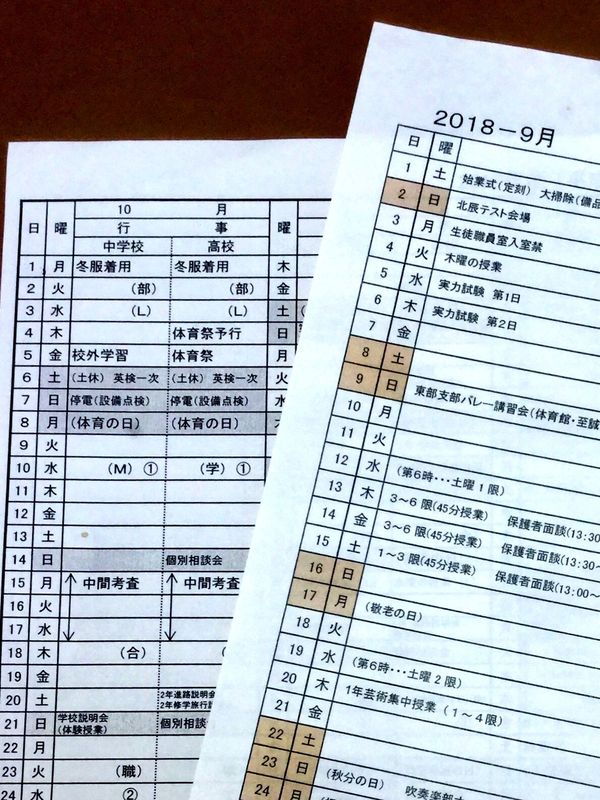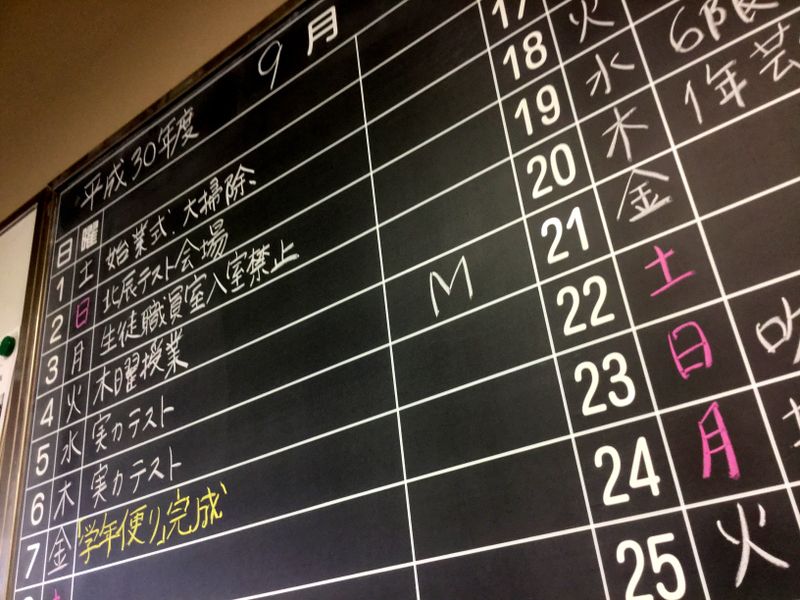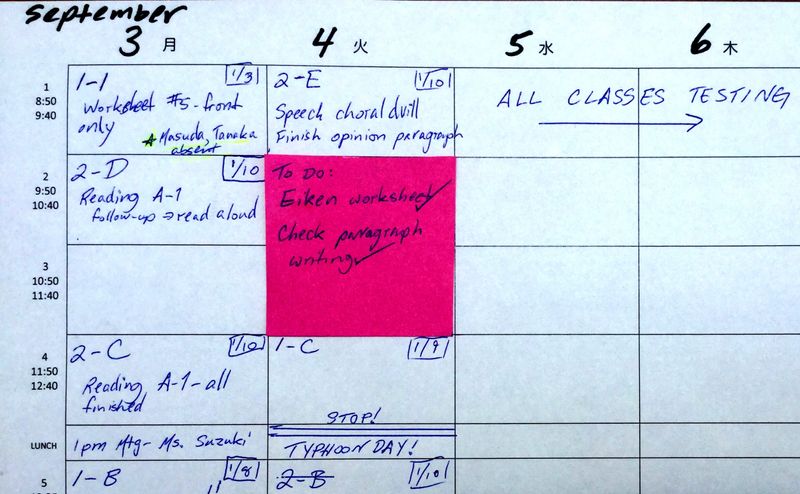Sep 30, 2018
Planning your days, weeks, months, and terms at schools
For those of us working in private and public elementary, junior and high schools, scheduling is the foundation of everything we do. If you've got your schedules under control, all else follows.
School Calendars
Every February, my colleagues and I anxiously await the announcement of the new school year calendar which starts in April. During the last few weeks of February, our school affairs department (教務, kyoumu), under the direction of the principal, produces a tabloid-size paper schedule that indicates all the events of the school year. As soon as we get our hands on this paper, we start scribbling and scheming about what we will do from April. We try to keep in mind that this schedule may be revised a few times during the school breaks, but it is mostly reliable.
The year calendar is the big picture. The little picture is the month schedule, which is usually settled in the last week of the previous month. At many schools, it is a one-page agenda of the events (and inevitable interruptions) to teaching hours.

In the staff room, you may see daily revisions of the fine details of the month schedule on the blackboards. It's a good idea to check the monthly paper schedule against the blackboard updates.

You may also notice a daily note about events, absences, and teacher duties.

On this daily schedule, you can see who is on 週番 shuban duty (sorry, I erased this for privacy), who is 欠勤 kekkin, absent, or 出張 shucchou, on a business trip. On this particular day, students were prohibited from entering the staff room due to a test schedule, and some teachers were assigned phone duties. These details indicate who will be available and who will be busy, and whether you can tutor students at your desk, or have to direct them to other spaces.
Making Sense of It All
The volume of information can be intimidating,. Not to mention that there are a considerable number of kanji to read and make meaning from. There are a few tools at your disposal that can help you make sense of it all.
Consider using Google Translate for getting the gist of electronic documents. School affairs department can provide these files. You can use Google Translate on pdf, word and text documents. Some terms may be rendered nonsense, so you may want to use another great tool, Jim Breen's Japanese-English Dictionary Server. This tool accesses multiple dictionaries and can gloss whole texts. You may get a better understanding from parsing the text with this kanji lookup.
Choosing a Planner That's Right for You
A long time ago, I relied on durable spiral bound planners for school administration. Although the ones published abroad are attractive, they aren't always suited to use i Japan because the academic year and holidays are so different.
For a while, I used Microsoft Outlook to plan, coordinate with colleagues, and even keep track of my lesson plans. I printed the plans and annotated as needed. Outlook was useful because it was available offline.
Later, at a wired school, I started learning to use Google Calendars. The notifications and the views of days, weeks, and months were useful. However, I could not use a laptop in the classroom due to logistics, and I could not use the Google Calendar app to control my lesson plans.
For a while, I experimented with bullet journals. However, laboriously copying Japanese and English schedules into journals would take too much time and tax my kanji ability. I needed everything - calendars in both languages, lesson notes, and memos - all in one place.
My solution is to use a 10 pocket A4 size clear file. These are available at 100 yen shops. They have sturdy plastic covers and thin plastic pockets for A4 or B5 papers. In my clear file, I keep the annual, monthly and incidental schedules. But the workhorse of my clear file is my weekly schedule that I write up myself.
Every term, I write up as many weekly pages as I need. In the right top corner, I have a note for lesson and course hours. The note 1/10 means hour one of 10. Absences are recorder here, too. The next week's plan is annotated as "follow-up" so that I remember what we finished, what we need to review, and what is next. Colored notes make the "To do" lists stand out. When I'm done, I check them off.
I'm in a habit of planning backwards. I start with my objectives that I intend to achieve at the end of a term or unit, and then determine how I am going to assess the steps along the way. The weekly planners determine how many hours I have, and identify obstacles such as interruptions and school events that I have to plan around.
Every term, I tuck my planners into a drawer so that the following year, I have a rough template of how I am going to manage the timing in the school terms, and a reminder of what I planned well, and what I should revise.
Over time, my students have noticed me carrying this clear file, and sometimes, they approach me to confirm when the next lesson is scheduled, or what events will cancel our lessons. It's gratifying to see my students noticing my fastidious planning and getting inspired to keep their own planners.



0 Comments